Itinerary edited by UNIVERSITY OF CAGLIARI 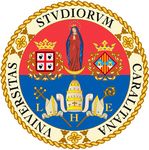

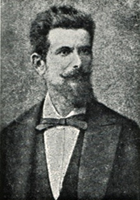
Domenico Lovisato was born on 12th August, 1842 in Izola, then part of the Kingdom of Lombardy–Venetia. In 1862, he enrolled in the University of Padua to study mathematics. He was vocal in seeking independence for Italy, and was arrested eight times. In 1864 he was tried for high treason, but acquitted for lack of evidence.
The following year he was banned from all schools in the Habsburg Empire, but this was commuted to suspension and a period of political confinement. In 1866 he enrolled as a volunteer in the Italian rebels’ army and fought against Austria in the Third War of Independence, gaining Giuseppe Garibaldi’s esteem and respect.
Lovisato graduated in January 1867 and began teaching in the secondary school in Sondrio, then in Sassari (1874), Girgenti (now Agrigento, 1875), Catanzaro (1876) and Cagliari (1884). When he moved to Sondrio, he developed a profound interest in earth sciences.
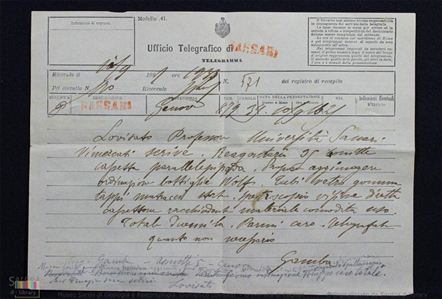
As a geologist, Lovisato was influenced by Leopoldo Pilla and Torquato Taramelli. In 1879, he was appointed Professor of Mineralogy and Geology at the University of Sassari. During that period, he published several papers and founded the Italian Alpine Club (C.A.I.) in Sassari. In 1881 he took part in a scientific expedition to Patagonia and Tierra del Fuego led by Captain Giacomo Bove.
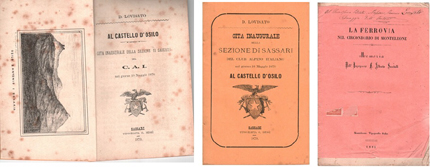
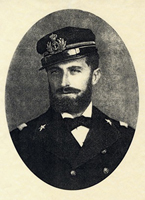 Giacomo Bove devised an ambitious project to explore Antarctica, but its costs were far too high and the project was shelved. The exploration was limited to Patagonia and Tierra del Fuego.
Giacomo Bove devised an ambitious project to explore Antarctica, but its costs were far too high and the project was shelved. The exploration was limited to Patagonia and Tierra del Fuego.
The group explored:
At Hammacoja, their ship wrecked due to gusty winds and extremely rough sea.
«So, the waves coming from all over prompted us to jump from the ship’s bow into the sea, at every raging wave ... Bove jumped after 10 or 12 others, Spegazzini before me but he clung a rope, screaming, Reverdito saved him; ... I lowered myself down by a rope ... At 3.30 we were all safe. Everyone was scared when they saw a bleeding cut on my forehead; I wrapped my dear mother’s handkerchief around my head.»
(Lovisato’s Diaries, volume IV, held by the Civic Museums of Trieste)
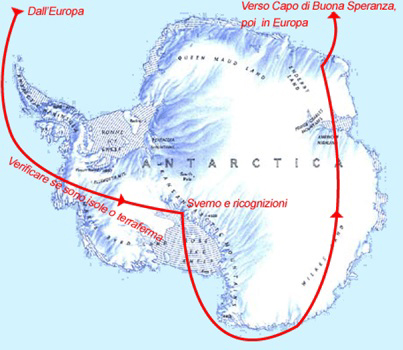
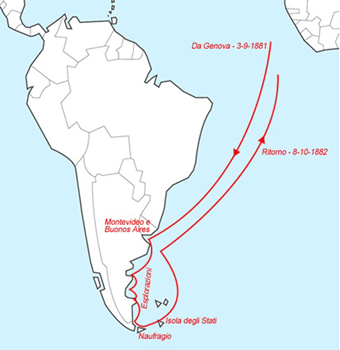
The crew was saved but they had no longer the equipment or means to continue their journey. Therefore, they were forced to go back to Buenos Aires where the President of the Republic of Argentina awarded Lovisato with a silver medal for his scientific achievements.
The scientific data he collected during his expeditions to South America allowed him to write several studies.
«Then the waves coming from all parts blow up from the bow to the sea at every furious wave ...... Bove jumps after 10 or 12, Spegazzini before me but it remains suspended from a rope and sends a scream, saves him Reverdito; ... I climbed down from a rope ... At 3.30 p.m. all were saved, but seeing my bloody forehead all got scared; I bandaged his head with a handkerchief of my sainted mother»
(Lovisato’s Diaries, volume IV, held by the Civic Museums of Trieste)

«The ship sailed at the speed of light, pushed by the waves that were rising up to the sky: this boat that had served us so many times in the past and could perfectly slice through the sea, tried to show what it was capable of one last time.»
(Lovisato’s Diaries, volume IV, held by the Civic Museums of Trieste)

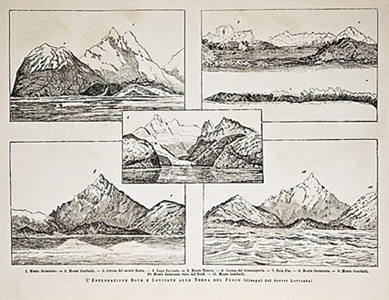
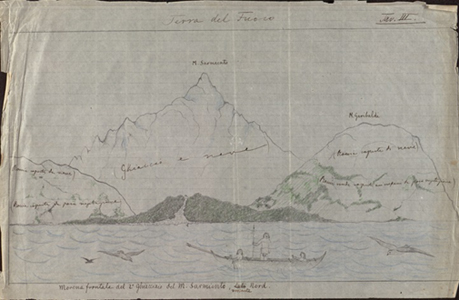
In 1884, Lovisato was appointed Professor of Mineralogy and Geology at the University of Cagliari, a position he held for over thirty years. During that period, he taught and conducted intense research activity.
He was appointed Director of the Institute of Geology and Mineralogy and Director of the "Royal Museum of Mineralogy and Geology".
His precious collection of Sardinian rocks, fossils and minerals is the result of his untiring research. This collection was acquired by the Museum of Geology and Palaeontology of the University of Cagliari, which was named after him in 1956.
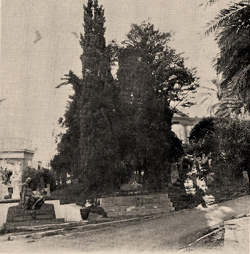
He collected specimens of Sardinian flora in collaboration with botanist Patrizio Gennari, who was the Chancellor of the University of Cagliari and former Director of the Royal Museum of Mineralogy and Geology.
Lovisato kept in contact with Garibaldi and carried out geological campaigns on the islands of La Maddalena and Caprera.
"Of all granit rocks in Sardinia, which vary greatly in terms of grain, colour, for compactness, hardness, strength, processing and beauty, the one that excels among all is undoubtedly the quarry of Cala Francese" (Lovisato 1913, p. 404)
Lovisato’s scientific interests never diminished his love for his homeland and anti-Austrian fervour. In 1915, he asked to be enrolled in the Italian army for the liberation of Istria calling himself “a valiant red-shirted surplus soldier”.
Domenico Lovisato died in Cagliari on 23rd February 1916 on the eve of the Italian Army’s occupation of Gorizia. His final wish was to be buried in his family tomb in the Bonaria Cemetery in Cagliari and he asked his tomb to be covered by a thick granite slab from Cala Francese.
The City of Cagliari commemorated Lovisato by naming a street after him.
12th August 1842 Lovisato was born in Izola (now in Slovenia)
1862 He enrolled in the course of mathematics at the University of Padua
1864 He was tried for high treason, but acquitted for lack of evidence
1866 He volunteered and fought against Austria in the Third War of Independence
1867 He graduated from the university
1867 He taught in a secondary high school in Sondrio
1874-1876 He taught in Sassari, Agrigento and Catanzaro
1879 He was appointed Professor of Geology and Mineralogy at the University of Sassari
1881 He took part in a scientific expedition to Patagonia and Tierra del Fuego
1884 He was appointed Professor of Geology and Mineralogy at the University of Cagliari
23rd February 1916 Lovisato died in Cagliari.
 Padua
Padua  Sondrio
Sondrio  Sassari
Sassari  Agrigento
Agrigento  Catanzaro
Catanzaro  Buenos Aires
Buenos Aires  Patagonia
Patagonia  Tierra del Fuego
Tierra del Fuego  Cagliari
CagliariNonnoi G. (2014). Domenico Lovisato. Una camicia rossa sulle tracce del tempo. In F. Atzeni, A. Mattone (Eds.), La Sardegna nel Risorgimento (p. 419-446). Roma: Carocci.
Gamboni T. (2002). Il geologo Domenico Lovisato. Almanacco maddalenino, p. 68-71.
Assorgia A., Callia R. (1999). Lo scienziato irredentista: Domenico Lovisato. In Assorgia A., Callia R. Lo sviluppo delle ricerche geologiche e minerarie nella Sardegna dell'Ottocento: i contributi di Vargas, Keyser, Lamarmora, Pilla, Mameli, Giordano, Sella, Marchese e Lovisato. Cagliari: C.U.E.C., p. 233-274.
Segala M. (1990). L'inutile priorità. Wegener e i precursori della deriva dei continenti. Nuncius: Annali di storia della scienza, 5(1), p. 247.
Lo Monaco M. (1983). Un geologo istriano precursore della teoria della deriva dei continenti. Rivista dalmatica, 54(2), p. 109-115.
Rodolico F. (1967). Naturalisti-esploratori dell'Ottocento italiano. Antologia scientifica e letteraria (p. 173-175). Firenze: Le Monnier.
Giannitrapani L. (1957). Il precursore italiano della teoria di Wegener. L'Universo, XXXVII, p. 139-150.
Imeroni A. (1927). Domenico Lovisato: la vita e le opere. Mediterranea: rivista mensile di cultura e di problemi isolani, (11-12).
Fossa Mancini E. (1924). L'opera scientifica di Domenico Lovisato. Bollettino della Società Geologica Italiana, fasc. 02, vol. 43 XLIII, p. 139-150.
Moscolin S. (1922). Brevi cenni biografici su Domenico Lovisato. Capodistria: Stab. tip. naz. Carlo Priora.
Lacroix A. (1916). Domenico Lovisato (1842-1916). Bulletin de la Société Française de Minéralogie, 39(3), p. 82-83.